Sleep, we need it, yet 1 in 3 Canadians have difficulty sleeping and 50-70 million Americans describe a sleep disorder. Sleep is a huge determinant of health, and we have forgotten how to get it.
Here we cover why we need sleep, how synchronizing our circadian cycles revolutionizes our sleep experience and how sunlight (or the lack of it) is our most potent tool for better sleep and daytime alertness. Equipped with these sleep fundamentals, you can better visualize and actualize these five fundamental lifestyle adjustments you need to make to improve your sleep.
Let's Get Started:
The Significance of Sleep
Yes, yes, we know we need sleep, but why? Why do we feel so miserable when we lack it, and why is it so toxic to our brains when we don’t get it?
Like all tissues in your body, your brain requires nourishing nutrients and toxic byproducts removal to function properly. Sleep is central in clearing toxins, including B-amyloid, associated with Alzheimer’s.
During sleep, specialized star-shaped brain cells called astrocytes alter their shape, creating wider channels between brain cells. These channels enable cerebrospinal fluid (CSF), the fluid surrounding the brain and spinal cord, to flow in and flush out the toxins that accumulate during daytime mental activity. (Ref)
Sleep also plays a crucial role in memory consolidation and emotional regulation.
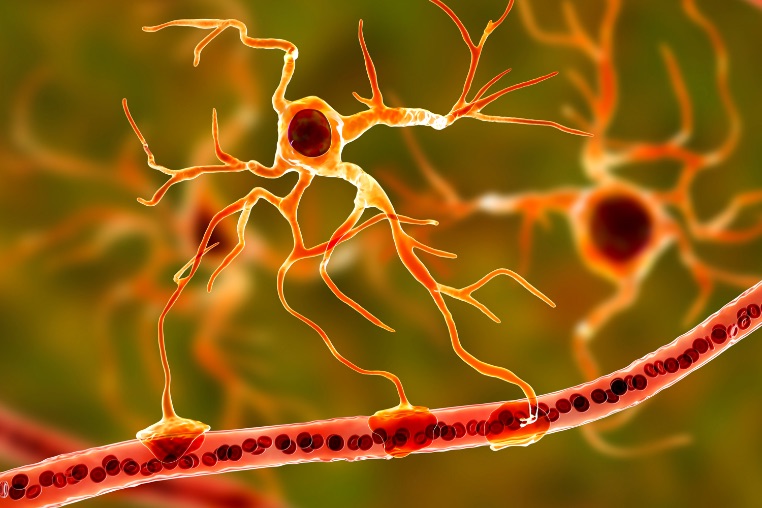
So sleep is essential for toxin removal, memory consolidation and emotional regulation, but how does our body make us sleepy so we can sleep and alert so we can function, survive and thrive?
Understanding Your Circadian Rhythms
All life on Earth has evolved in harmony with the natural rhythm of night and day, and humans are no exception. Our eyes contain a light-sensitive pigment called melanopsin, which responds to the blue light found in early morning sunlight, signalling our brain to produce serotonin, the feel-good hormone. As long as sunlight keeps triggering your melanopsin, you make more serotonin.
Early morning blue light also activates cortisol. Yes, cortisol gets a bad rap in chronic stress, but chronic uncontrolled stress is the problem, not cortisol. Cortisol promotes wakefulness, mobilizes energy reserves, and enhances cognitive function, helping to prepare your body and mind for the day’s activities.
KeyPoint: Early morning blue light wakes us up, sunlight throughout the day keeps us energized, and as the sun sets, the fading light prompts our brain to convert serotonin to melatonin, preparing us for sleep.
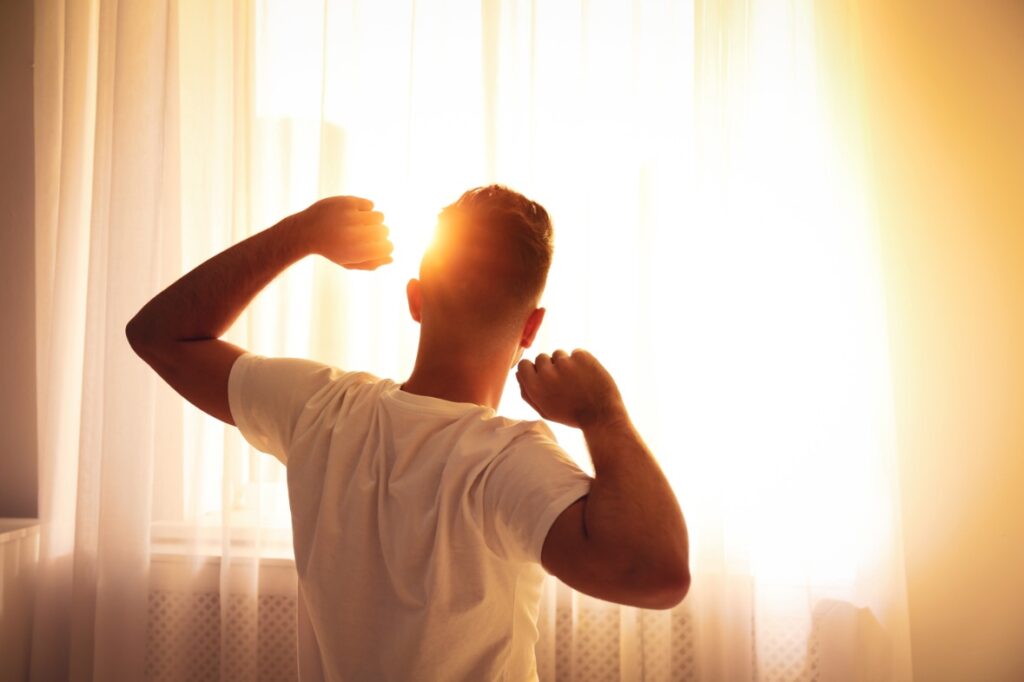
Over 80% of all metabolic processes within you right now function optimally when they align with this rhythm of activating when you wake and winding down before sleep. Collectively called your circadian rhythms, they control your blood pressure, temperature regulation, hormone production, immune response, energy metabolism, and secretion of hormones, digestive enzymes, and neurotransmitters.
Disrupting circadian rhythms through late-night blue light exposure, nighttime eating, or lack of morning blue light impacts sleep, longevity, and cellular aging.(Ref)
5 Lifestyle Adjustments for Improved Sleep
Without knowing it, most sleep improvement tips you have read about revolve around resynchronizing your circadian rhythms—winding up with sunlight during the day, staying active, and then winding down with darkness at night.
To be clear, you are hardwired to this response to light, and there is no way around it. Here are five actionable adjustments to resynchronize your sleep-wake cycle and improve your sleep.
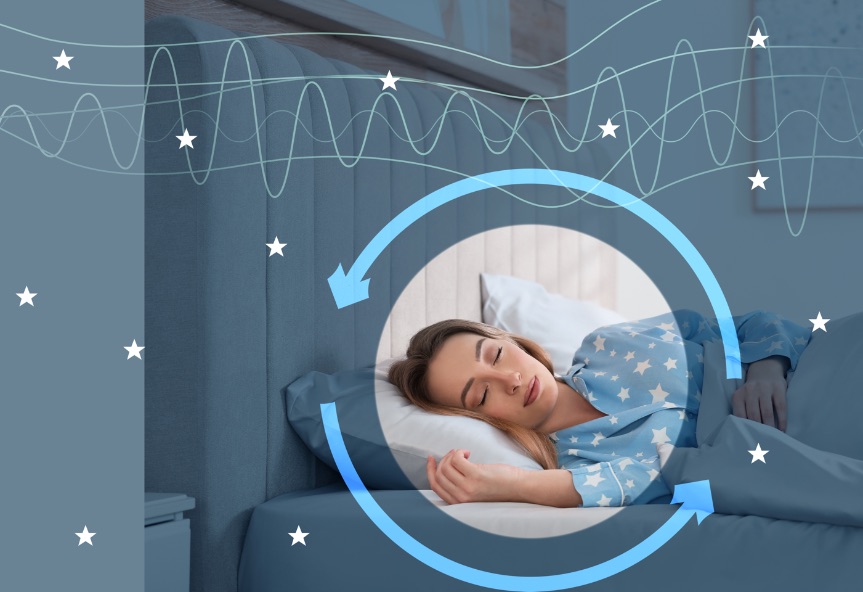
1) Reset with Sunlight
Revamp your morning routine by exposing your eyes to early morning blue light immediately upon waking. Head outside without your glasses for best results, as viewing sunlight through glass or car windows is 50 times less effective. Exercise outside in the early morning for double wake-up points!
Early morning light contains a unique mix of wavelengths from the sun’s low angle that boosts alertness. This mix is not present in the later morning light. Avoid looking directly at the sun and adjust your exposure time based on sun intensity (around 10 mins on a clear early summer morning, longer if overcast or less intense sun). Take periodic sunlight breaks throughout the day to maintain energy and attentiveness.

If it’s dark when you wake, use artificial sunlight (SAD Lamps) to mimic early morning sunlight in your eyes as soon as you wake. Keep using it during your day if needed, but remember that sunlight is typically more potent than a SAD lamp, so get outside.
Experience the calming power of sunset light! The lower energy red and infrared in sunsets prepares you for sleep. Research suggests watching an hour around sunset may reduce the stimulating impact of personal electronics before sleep -but not eliminate it!
2) Stay Active during Alert Hours
Exercise is stimulating. It helps activate you during the day, and by reducing stress and burning energy, it makes you tired at night. Do it in the morning to activate you. Never exercise 2-3 hours before sleep. Don’t expect to sleep well if you lead a sedentary life.
The process of digesting food activates your body, so eating a rich meal late at night can keep you up. Eat your heavier meals earlier in the day and choose lighter meals at night. Avoid eating anything within three hours of bedtime, and skip midnight snacks to allow your digestive system to rest. Limit coffee and other stimulants to the morning.
3) Mimic Night when you Sleep

As the sun sets and high-energy blue light transitions to lower-energy deep reds and infrared light, your brain begins converting serotonin into melatonin, preparing you for sleep.
However, reexposure to the intense blue light from personal electronic devices blocks melatonin buildup. Avoid disrupting this process by limiting the use of electronic screens before bedtime. Consider blue light-blocking glasses if necessary and opt for warmer-toned LED lights in the evening, pointing night lights upwards and morning lights downwards. Create an ideal sleep environment by mimicking the night’s cool, dark hush. Remove or cover all light sources, block disruptive noises, and maintain a cool and quiet bedroom.
4) Create Relaxing Evenings
Make evenings your wind-down time by engaging in relaxing activities.
Avoid anything that is stressful such as work-related calls or emails that spike your cortisol and reactivate you.
We all love bedtime stories, whether audio or visual, but ensure the content is soothing, not scary or stimulating.
Opt for reading a book or listening to an audiobook, as they are less activating than watching a movie. TVs typically emit less blue light than computer screens, making them a better choice for evening entertainment.
5) Sync your Rhythm with iPhone Health
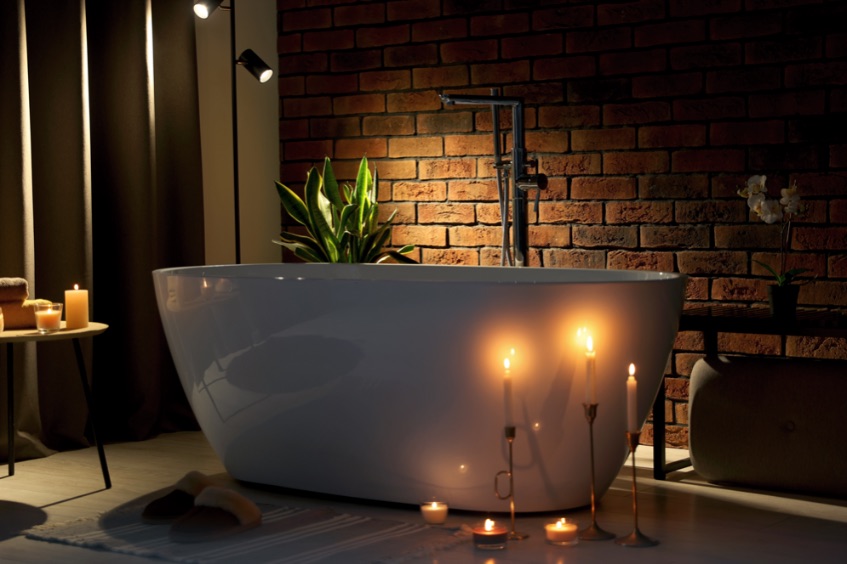
Better sleep requires a routine. Leverage iPhone health to stay on track. Yes, our obsession with our personal electronics is part of the problem, but if you are going to use it, use it for health.
- Your Sleep Schedule: Utilize your iPhone’s Health App to set a consistent 8-hour sleep schedule and sync your wake time with early morning light. Incorporate early morning outdoor activities and exposure to natural light to help regulate your body’s internal clock.
- Activate Night Shift at Night: Minimize blue light exposure before bedtime by enabling Night Shift on your iPhone. This feature adjusts the display to warmer red tones resembling sunset colours, reducing the impact of blue light on your sleep quality.
- Set Sleep Focus and Disable Notifications: Optimize your phone’s settings for better sleep focus. Utilize the Sleep Focus feature to turn off notifications during sleep and set a “wind down” period to remind you to prepare for sleep and engage in relaxing activities before bedtime.
Putting it all Together
Sleep is an essential phase within your circadian cycle; resetting your entire 24-hour rhythm is crucial to achieving better sleep.
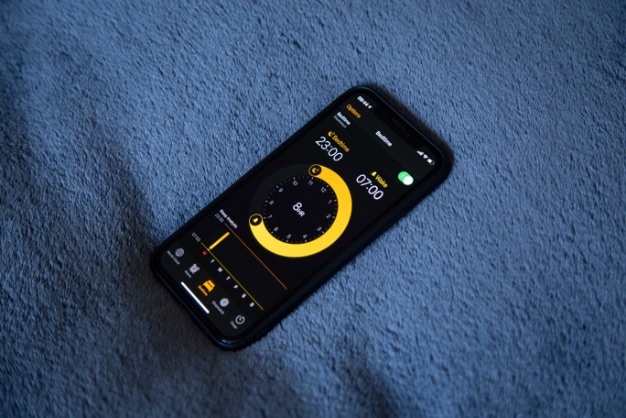
Start each day with purpose by aligning your wake-up time to the activating blue light of the early morning sun. Stay active and let sunlight fuel your energy throughout the day. Begin your wind-down several hours before sleep, preferably triggered by sunset’s sedating, low-energy reds and infrareds.
Create tranquillity in your late evenings and nighttime. Avoid disrupting this rhythm with stimulating blue light just before bed.
Allow yourself several weeks to readjust your circadian rhythms and to experience rejuvenation from a more synchronized you. Stay dedicated and consistent, own your sleep and seize the day.



